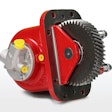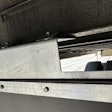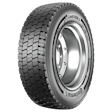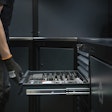The remanufacturing industry, which specializes in sustainable manufacturing, announced Thursday that six leading associations with members in the automotive sector have reached a common understanding of basic definitions associated with their industry.
The move is a tremendous step forward in the industry’s quest to raise awareness and acceptance of remanufactured products.
The European Association of Automotive Suppliers (CLEPA), Motor & Equipment Remanufacturers Association (MERA), Automotive Parts Remanufacturers Association (APRA), Automotive Parts Remanufacturers National Association (ANRAP), European Organization for the Engine Remanufacture (FIRM) and Remanufacture Committee of China Association of Automobile Manufactures (CPRA), all aligned on a common set of descriptions which define the industry.
“For many years, the lack of a common understanding within the sector has led to vigorous debate, misunderstandings and lack of a unified movement,” says Roberto Vavassori, CLEPA President.
“Today we have broken through these barriers, not just in one country, but internationally, with six of the world’s leading authorities on the subject commonly agreeing on what defines us. It’s a giant step forward for a global and ever-growing industry,” adds Salvador Munoz Zarate, General Manager of WABCO Reman Solutions and delegate of CLEPA to the Basel Convention.
The six associations have converged on the following two definitions:
- Remanufacturing process: Remanufacturing is a standardized industrial process* by which cores are returned to same-as-new, or better, condition and performance. The process is in line with specific technical specifications, including engineering, quality and testing standards. The process yields fully warranted products.
*An industrial process is an established process, which is fully documented, and capable to fulfill the requirements established by the remanufacturer.
- Core: A core is a previously sold, worn or non-functional product or part, intended for the remanufacturing process. During reverse logistics, a core is protected, handled and identified for remanufacturing to avoid damage and to preserve its value. A core is not waste or scrap and is not intended to be reused before remanufacturing.
In addition, European associations had previously agreed to the following definition applicable in Europe:
- Remanufactured Part: A remanufactured part fulfills a function which is at least equivalent compared to the original part. It is restored from an existing part (CORE), using standardized industrial processes in line with specific technical specifications. A remanufactured part is given the same warranty as a new part and it clearly identifies the part as a remanufactured part and states the remanufacturer.
“The increased use of remanufactured products around the world is accelerating an international drive towards a circular economy,” says John Chalifoux, president and chief operating officer of MERA. “Today’s announcement of a common understanding among the associations will further help the industry communicate the quality, value and sustainability benefits of remanufactured goods.”
“Remanufacturing, which has been around for several decades, has gained greater awareness more recently with governments,” adds Steve Handschuh, president and CEO of the Motor & Equipment Manufacturers Association (MEMA), the parent of MERA.
The U.S. Congress demonstrated its understanding and acceptance of remanufactured motor vehicle parts by passing the Federal Vehicle Repair Cost Savings Act of 2015. The Act—signed into law by President Barack Obama—requires federal agencies to prioritize the use of remanufactured components when servicing the federal civilian vehicle fleet, if those parts reduce cost while maintaining the quality of the vehicle, MERA says.
The G7 Alliance for Resource Efficiency was launched by the heads of state and government at their summit at Schloss Elmau, Germany on June 7- 8, 2015. Within this declaration the G7 members committed themselves to support the circular economy and remanufacturing. At the kick-off event, all G7 countries were represented by delegations comprising representatives of governments, business, trade unions and research/science. The European Commission was also represented at the conference.
“These are clear indications that remanufacturing is more and more on the agenda of governments,” says Peter Bartel, vice chairman of the APRA Europe Board. “Today’s decision will enable us to speak with one voice, enabling us to better present our views and solutions around sustainability to our customers, relevant organizations, policymakers and governments around the globe.”
“As we are in a global economy with global product platforms, the best way to protect our raw materials, environment and to keep quality product affordable for consumers as well as being a service solution, is through remanufacturing. These definitions clearly lead us into that direction,” says Joe Kripli, president of APRA.
The six associations invite other organizations to support the industry by recognizing the above international definitions.











